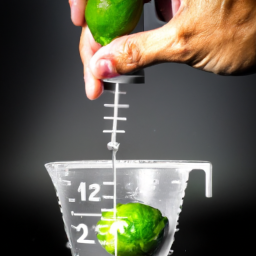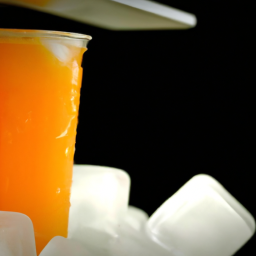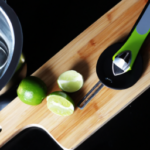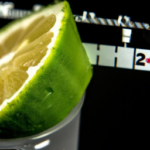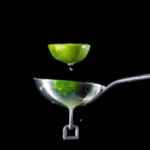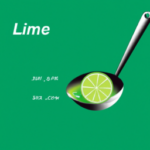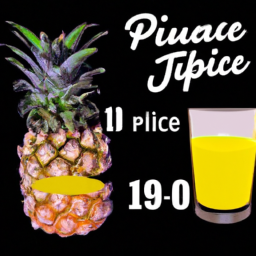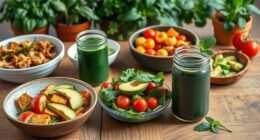Being someone who regularly includes lime juice in my cooking and drinks, I understand how important it is to get the right amount of juice from each lime. Consistency and quality are crucial, especially when following recipes that require precise measurements.
That’s why I’ve done my research on how much juice per lime you can expect and the factors that can affect it. When it comes to measuring lime juice, it’s not as simple as just squeezing a lime and hoping for the best. There are many variables that can influence how much juice you get from each lime, including the type of lime, its ripeness, and the tools you use to extract the juice.
As someone who wants to ensure the best results in my cooking and drinks, I’ve delved into these factors and have some insights to share. So, if you’re like me and want to maximize your lime juice yield, stay tuned for some useful tips and techniques.
Key Takeaways
- The amount of juice per lime depends on factors such as ripeness, pressure applied and tools used, with an average yield of 0.5-2.5 oz.
- Best practices for juicing limes include using room temperature limes, a citrus juicer, and consistent technique, while ripe limes should be heavy with fragrant citrus scent.
- Tips for maximizing juice yield include choosing the right lime, using a citrus reamer/juicer, rolling on a hard surface, microwaving, cutting in half lengthwise, and using a fine mesh strainer.
- Lime juice is not only a flavorful addition to cooking, baking and cocktail-making, but also offers health benefits such as vitamin C, antioxidants and aiding digestion, and can be stored through refrigeration, freezing or canning.
Factors Affecting the Amount of Juice per Lime
When you squeeze a lime, the amount of juice you get can be affected by various factors. The ripeness of the lime plays a significant role in determining the amount of juice yield. If the lime is too ripe, it may have less juice content, and if it’s not ripe enough, it may not have reached its full potential.
Another factor that affects the juice yield is the amount of pressure you apply. If you squeeze the lime too hard, you may extract some bitter compounds from the lime peel, which can affect the flavor of the juice.
To ensure that you get the best juice yield from your limes, it’s essential to follow some best practices for lime juicing. First, make sure that the limes are at room temperature before juicing. This helps to soften the lime, making it easier to extract the juice.
Second, use a citrus juicer to extract the juice from the lime. This ensures that you get the most juice yield without any bitter compounds from the peel.
Finally, be consistent in your juicing technique to ensure that you get the same amount of juice yield from each lime. By following these best practices, you can ensure that you get the most out of your limes and use them to their full potential.
Now, let’s move on to the next section about the different types of limes.
Types of Limes
I want to talk about the different types of limes that affect the amount of juice per lime. Specifically, we’ll be discussing Key Limes, Persian Limes, and Bearss Limes.
It’s crucial to understand the differences between these types of limes in order to achieve consistency and quality control when measuring the amount of juice per lime.
Key Limes
You’ll be surprised at how much tangy juice those tiny key limes can yield! As a citrus fruit with a high acidity content, key limes are commonly used in cooking, baking, and cocktail-making. When it comes to lime harvesting techniques, key limes are hand-picked when they are still green and unripe. This is because key limes will continue to ripen and turn yellow even after they are harvested.
To paint a clearer picture, let’s take a look at this table comparing the juice yield of key limes versus the more common persian limes:
| Lime Type | Juice Yield (in ounces) per Lime |
|---|---|
| Key Lime | 0.5 – 1.5 |
| Persian Lime | 1.5 – 2.5 |
As you can see, key limes may be smaller in size, but they can pack a powerful punch in terms of tangy flavor. This is why it’s important to be consistent with the amount of juice extracted from each lime, especially when it comes to recipe measurements. Speaking of persian limes, let’s now move on to discussing the differences between key limes and persian limes in terms of taste and usage.
Persian Limes
Did you know that the larger and less acidic persian limes are often used in dishes and drinks that require a milder citrus flavor? As a lime farmer, I can attest to the fact that Persian lime cultivation is a delicate process that requires attention to detail and constant quality control.
These limes are typically grown in tropical and subtropical regions and need consistent irrigation, fertilization, and pest control in order to produce high-quality fruit.
In addition to being a staple ingredient in many cuisines, Persian limes also have numerous health benefits. They’re rich in vitamin C, antioxidants, and flavonoids, which can help boost the immune system and reduce the risk of chronic diseases.
With all these benefits, it’s no wonder why Persian limes are in high demand in the culinary and health industries. Speaking of demand, let’s move on to the next section about the popular Bearss limes.
Bearss Limes
Bearss limes, also known as Tahitian limes, are often mistaken for lemons due to their pale yellow-green color, but their juicy and acidic flesh sets them apart. As with any lime, it’s important to use the correct amount of juice to ensure consistency in flavor and quality.
Here are three things to keep in mind when juicing Bearss limes:
-
Bearss lime seasonality: These limes are typically available from May to September, with peak season in July and August. It’s important to use the freshest limes possible to get the best flavor and juiciness.
-
Bearss lime flavor profile: These limes have a less acidic flavor compared to other lime varieties, with a slightly sweet and floral taste. This makes them a great choice for cocktails and desserts.
-
Precise and accurate measurements: To ensure consistency in your recipes, it’s important to measure the amount of juice you extract from each lime. A good rule of thumb is to get about 1-2 tablespoons of juice per Bearss lime.
When juicing Bearss limes, it’s important to use the right tools to get the most juice out of each lime. Let’s take a look at some of the best tools for juicing limes.
Tools for Juicing Limes
To efficiently extract the most juice from your limes, you’re gonna need some proper tools. There are various juicing tools that you can use to extract lime juice, and each of them has its unique advantages and disadvantages. Some of the most common juicer types include manual and electric juicers, citrus reamers, and hand squeezers. The type of juicer you choose will depend on your personal preference, the amount of lime juice you need, and the consistency of the juice you want to achieve.
To give you a better idea of the different juicing tools available, here’s a table that outlines some of their features and benefits:
| Juicer Type | Features | Benefits |
|---|---|---|
| Manual Juicer | Handheld, easy to use | Perfect for small amounts of juice |
| Electric Juicer | Automatic, fast, and efficient | Best for large batches of juice |
| Citrus Reamer | Simple design, affordable | Ideal for squeezing small amounts of juice |
| Hand Squeezer | Easy to use, compact | Great for making a quick drink or two |
When it comes to extracting lime juice, consistency is key. To ensure that you get the best results, it’s important to use the right juicing tool for the job. Once you’ve extracted the juice, the next step is to choose ripe limes to get the most flavor and nutrients from your juice.
How to Choose Ripe Limes
Choosing ripe limes is like finding the perfect avocado – you want to squeeze them gently and feel for a slight give, indicating they’re ripe and ready to use. Here are a few tips for selecting the best limes:
- Look for limes that are heavy for their size. This means they contain more juice and are likely ripe.
- Check the color of the lime’s skin. A ripe lime will be bright green or yellowish-green. Avoid limes that are too green or too yellow.
- Smell the lime. A ripe lime will have a fragrant, citrusy scent.
- Avoid limes with soft or mushy spots, as they may be overripe or spoiled.
Knowing how to tell if a lime is ripe is crucial for ensuring the best flavor and consistency in your recipes. Once you have your ripe limes, it’s important to use them efficiently.
One of the best ways to use leftover lime juice is to freeze it in ice cube trays for later use in cocktails or marinades.
Now, let’s move on to the next step – juicing those limes.
How to Juice a Lime
When you’re making a recipe that calls for fresh lime juice, it’s important to know how to properly juice a lime to get the most out of its tangy flavor. While there are alternative methods, I prefer to use a traditional citrus juicer. This tool allows me to extract the maximum amount of juice from each lime with minimal effort.
To ensure consistency and quality control, I like to measure the amount of juice I get from each lime. The easiest way to do this is to use a measuring cup or spoon. According to my experience, on average, one lime produces about 2 tablespoons of juice. However, this can vary depending on the size and ripeness of the lime. Therefore, it’s important to taste and adjust the amount of juice added to a recipe accordingly. Using fresh lime juice has many benefits, including enhancing the flavor of dishes and providing a healthy dose of vitamin C.
How to Measure Lime Juice
Measuring lime juice is like creating a perfect balance in a recipe, where too little can leave a dish lackluster and too much can overpower its flavors. To ensure consistency and quality control, it’s important to measure the amount of lime juice used in a recipe accurately. Here are four steps to measuring lime juice:
-
Cut the lime in half: Before juicing a lime, cut it in half using a sharp knife or a citrus juicer.
-
Extract the juice: Squeeze the lime halves using a manual juicer, or use a reamer to extract the juice. You can also use a citrus press to get every last drop of juice from the lime.
-
Strain the juice: To remove any seeds or pulp, strain the lime juice through a fine mesh strainer or cheesecloth.
-
Measure the juice: Use a measuring cup or a tablespoon to measure the amount of lime juice needed for the recipe.
Alternative uses for lime juice include adding it to water for a refreshing drink, mixing it with honey as a natural cough remedy, or using it as a natural cleaning agent. Additionally, lime juice has several health benefits, including aiding digestion, boosting the immune system, and fighting against infections. By measuring the amount of lime juice accurately, you can ensure that you’re getting the full benefits of this citrus fruit.
Moving on to the next section, let’s talk about the average amount of juice per lime.
Average Amount of Juice per Lime
You’re in for a citrusy surprise – each lime is a tiny treasure trove of zesty goodness waiting to burst forth with every cut. The average amount of juice per lime can vary depending on the type of lime, its ripeness, and the lime squeezing techniques used.
Generally, a single lime can yield approximately 2 tablespoons of juice, but some limes may contain up to 3 tablespoons or more. To ensure consistency and quality control, it’s important to measure the juice accurately. This can be done using a citrus juicer or by hand-squeezing the lime with a fork or citrus press.
If you’re short on limes or prefer not to use them, there are also lime juice alternatives such as bottled lime juice or concentrated lime juice. However, it’s important to note that the taste and freshness may differ from using fresh limes.
By maximizing juice yield and using the right techniques, you can get the most out of each lime and elevate your dishes to the next level.
Tips for Maximizing Juice Yield
Now that we know the average amount of juice per lime, let’s talk about how to maximize the juice yield from each lime. As someone who uses lime juice frequently in my cooking and cocktails, I’ve found that a few tips and tricks can make a big difference in the amount of juice I’m able to extract from each lime.
First and foremost, it’s important to choose the right type of lime. Mexican limes, also known as key limes, are smaller and juicier than the larger Persian limes commonly found in grocery stores. Additionally, using a citrus reamer or juicer can help to extract as much juice as possible.
Here are a few more tips for maximizing flavor and yield when working with limes:
- Roll the lime on a hard surface before cutting it to loosen the juice.
- Microwave the lime for 10-20 seconds before juicing to soften the fruit and make it easier to extract the juice.
- Cut the lime in half lengthwise, rather than crosswise, to expose more of the juice sacs.
- Use a fine mesh strainer to remove any seeds or pulp that may have gotten into the juice.
By following these tips, you can ensure that you’re getting the most out of each lime and maximizing the flavor in your recipes. However, if you find yourself without any fresh limes on hand, there are also a number of lime juice substitutes that can work in a pinch. But more on that in the next section.
When it comes to storing lime juice, there are a few important things to keep in mind.
Storing Lime Juice
To keep your lime juice fresh and flavorful, it’s important to know the best ways to store it. Storing lime juice properly can prevent oxidation, which can cause the juice to lose its flavor and nutrients. Here are some tips on how to store lime juice:
| Method | Description | Pros | Cons |
|---|---|---|---|
| Refrigeration | Store in airtight container and refrigerate. | Keeps juice fresh for up to a week. | May cause juice to lose some flavor. |
| Freezing | Freeze in ice cube trays or freezer-safe container. | Can be stored for up to 6 months. | Thawing may cause separation. |
| Canning | Use canning jars and follow proper canning procedures. | Can be stored for up to a year. | Requires proper equipment and technique. |
Consistency and quality control are important when storing lime juice. Be sure to use precise and accurate measurements when storing and labeling, and always use fresh, high-quality limes. With the proper storage methods, you can enjoy fresh and flavorful lime juice for all your recipe needs.
Now that you know how to store your lime juice properly, let’s move on to some delicious recipes that use this versatile ingredient.
Recipes Using Lime Juice
Let’s explore some mouth-watering recipes that incorporate the zesty flavor of lime juice, adding a burst of freshness to any dish. Lime juice is not only a delicious addition to meals, but it also offers a range of health benefits. It’s packed with Vitamin C, which helps boost immunity and improve skin health. Additionally, it can aid in digestion and has anti-inflammatory properties.
If you’re looking for a substitute for lime juice, lemon juice is a great option. However, keep in mind that the flavors are slightly different, so it may alter the taste of the dish.
Now, onto some delicious recipes that use lime juice:
-
Lime and cilantro rice: Cook white rice with lime juice, chopped cilantro, and a bit of salt for a flavorful and easy side dish.
-
Lime marinated shrimp tacos: Marinate shrimp in lime juice, garlic, and chili powder before cooking and serving in a tortilla with your favorite toppings.
-
Lime and avocado salsa: Mix diced avocado, tomatoes, red onion, and lime juice for a fresh and healthy dip.
-
Lime and honey glazed chicken: Brush chicken with a mixture of lime juice, honey, garlic, and soy sauce before baking for a tasty and tangy main dish.
Remember, when using lime juice in your recipes, it’s important to be precise with measurements to ensure consistency and quality control. So, grab your lime and get cooking!
Frequently Asked Questions
How many calories are in lime juice?
Lime juice nutrition varies depending on preparation. For accurate calorie count, measure ingredients precisely. Lime juice recipes benefit from consistency and quality control. Technical language ensures accurate measurements and consistent results.
Can lime juice be used as a substitute for lemon juice in recipes?
As a bartender, I prefer lime juice over lemon for cocktails. In baking, use half the amount of lime juice in place of lemon and adjust to taste. Consistency and quality control are vital for optimal results.
What are some health benefits of consuming lime juice?
As someone who loves the immune boosting and skincare benefits of lime juice, I also appreciate its versatile culinary uses and unique flavor profiles. Consistency and quality control are key to unlocking its full potential.
How long does lime juice last in the refrigerator?
Funny you should ask, I just stored some lime juice in the fridge myself. Typically, lime juice lasts about 2-3 weeks when refrigerated properly. Make sure to check the expiration date and practice quality control.
Are there any alternative methods for juicing limes other than using a citrus juicer?
I’ve found that manual juicing techniques work well for limes. A sturdy handheld citrus squeezer or even a fork can do the trick. It’s important to consistently measure and control quality to ensure the best results.
Conclusion
In conclusion, juicing limes can be a daunting task, but with the right tools and techniques, it can be a breeze. Always choose the right type of lime for your recipe, and make sure it’s ripe before juicing.
Using the right juicing tools, such as a citrus reamer or juicer, can make a big difference in the amount of juice you yield. Consistency and quality control are key when it comes to measuring the amount of juice per lime. It’s important to know the average amount of juice per lime, and to maximize juice yield by using tips such as warming the lime, rolling it before juicing, and applying pressure evenly.
Storing lime juice properly can also help maintain its freshness and flavor. Remember, the right amount of lime juice can make or break a recipe, so take your time and ensure that you’re getting the most out of your limes.
With these tips in mind, you can be sure to impress your guests with delicious lime-infused dishes. So go ahead, juice those limes with confidence, and enjoy the zesty flavors they bring to your dishes!
Ilana has been a vegan for over 10 years. She originally made the switch for health reasons, but soon found herself becoming more and more passionate about the ethical and environmental implications of a vegan lifestyle. Ilana is the author of The Graceful Kitchen, a blog all about veganism. She loves to cook up delicious and nutritious vegan meals, and share her recipes with others who are interested in leading a cruelty-free life. Ilana is also a strong advocate for using whole foods as the foundation of a healthy diet, and believes that going vegan is one of the best ways to achieve this.
